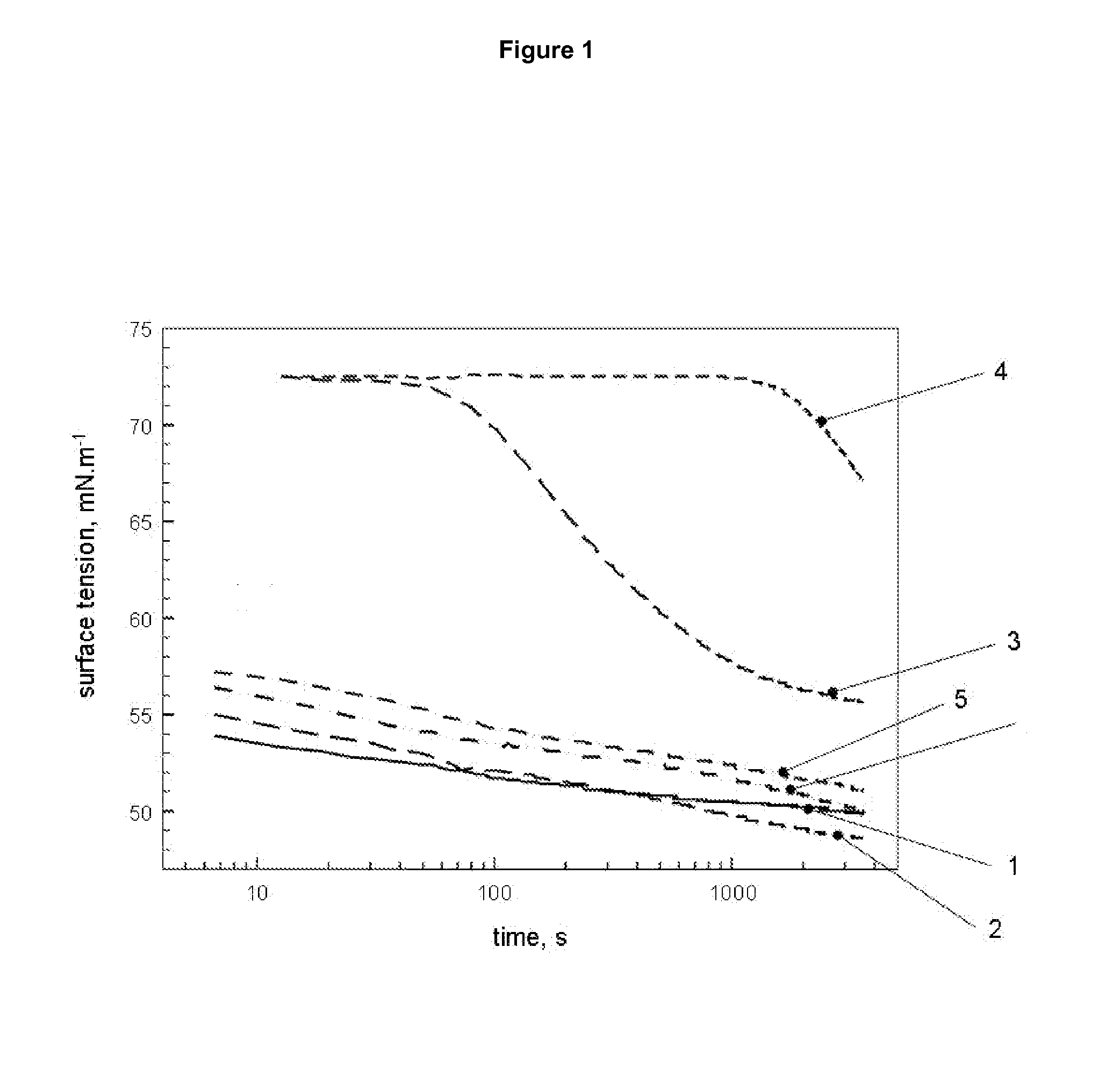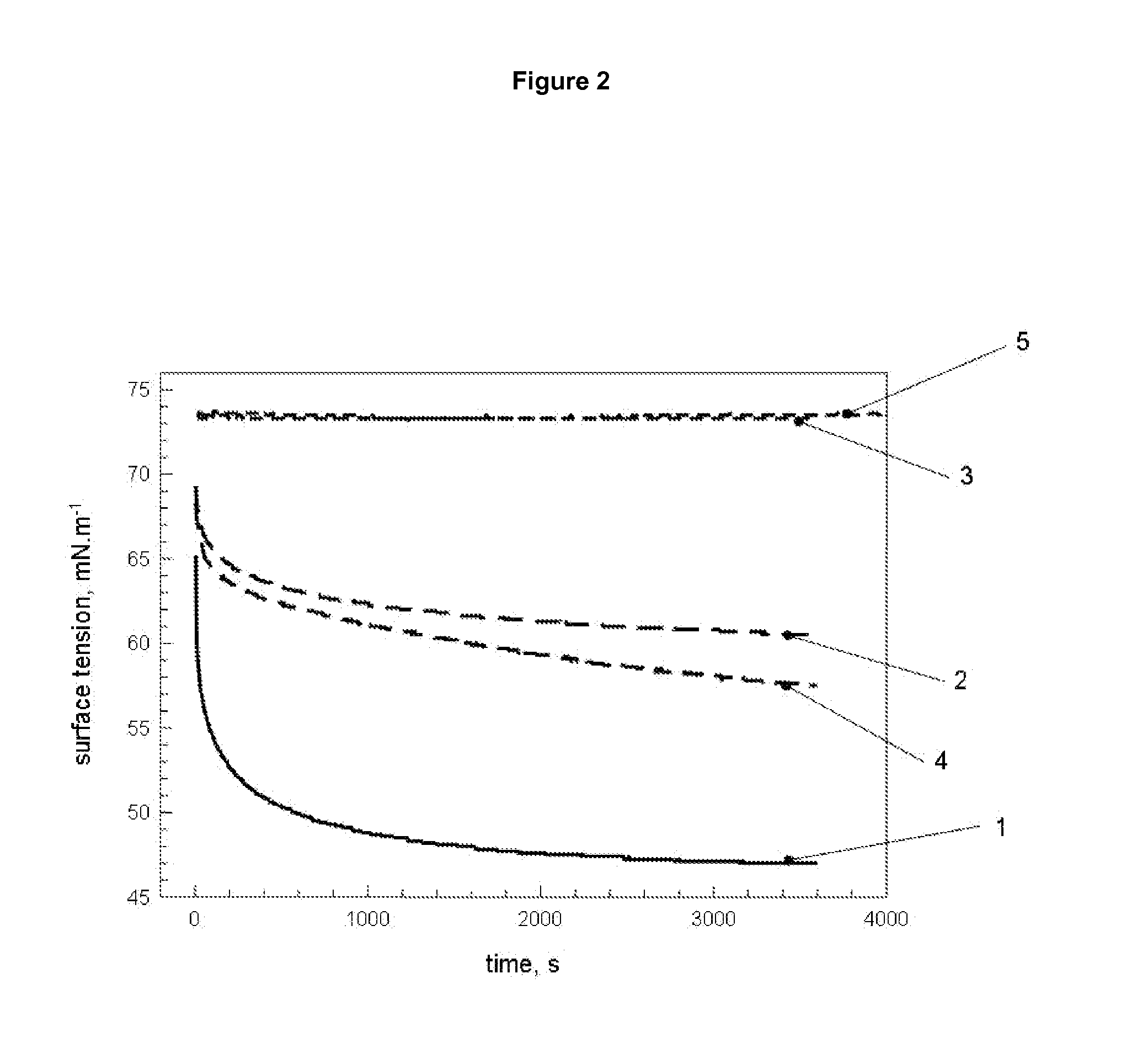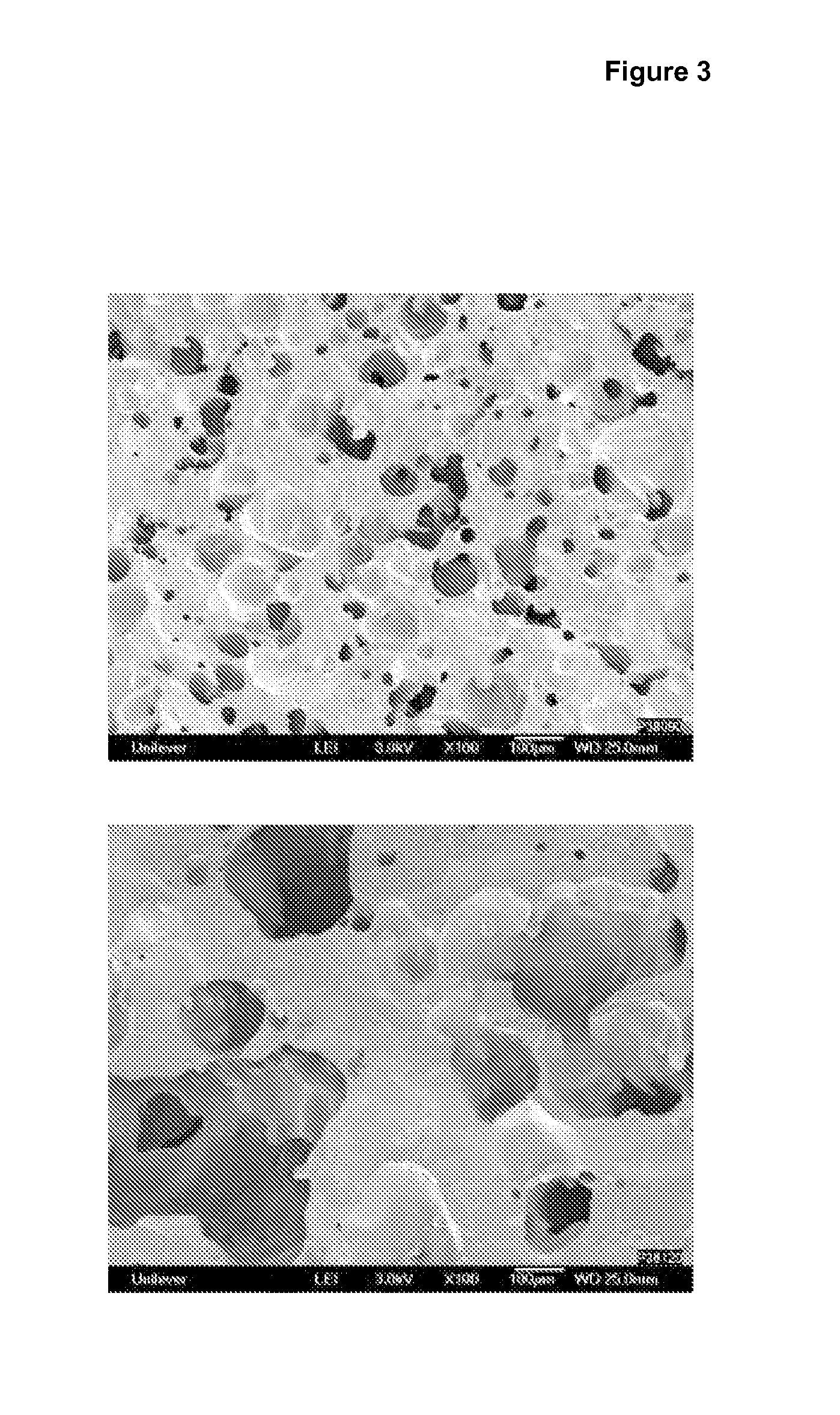Method for preparing aggregated protein particles
a protein particle and aggregate technology, applied in the field of aggregated protein particle preparation, can solve the problem that the surface active properties of the obtained aggregated protein particle do not have anymore, and achieve the effect of simple process, strong surface activity reduction, and reduced surface activity
- Summary
- Abstract
- Description
- Claims
- Application Information
AI Technical Summary
Benefits of technology
Problems solved by technology
Method used
Image
Examples
example 1
Preparation of Aggregated Whey Protein Particles
[0140]The surface tension of various whey protein solutions or dispersions was determined, which have been treated in different manners; all at a concentration of 1% by weight at 25° C. FIG. 1 gives the results of the measurements.
[0141]Whey powder concentrate (WPC 80 ex DMV International) was dissolved in water at a concentration of 10% by weight. The solution was introduced into a jacketed double walled glass vessel which was kept at a temperature of 80° C., and set to stir at ˜700 rpm on a magnetic stirrer for 60 min. Subsequently the solution / dispersion was quench cooled in cold water.
[0142]Part of the solution was diluted three-fold with water and divided over centrifuge tubes and centrifuged for 30 minutes at 10,000 g. The supernatant was removed, and again the agglomerated whey protein was dispersed in water at a three-fold dilution, and subsequently centrifuged for 30 minutes at 10,000 g. This was repeated 4 or 9 times, such th...
example 2
Preparation of Aggregated Chicken Egg White Protein Particles
[0146]The following procedure was followed to prepare chicken egg white protein having reduced surface activity:[0147]a. introduce liquid egg white protein (Ovod'or ex Van Tol Convenience Food, 's-Hertogenbosch, Netherlands) into a jacketed double walled glass vessel kept at a temperature slightly above 80° C. and set to stir at 700 rpm on a magnetic stirrer for 100 minutes;[0148]two separate samples were made, the first at a protein concentration of 10.5% by weight (Ovod'or as such), and a second at a protein concentration of 5.3% by weight (Ovod'or diluted with water);[0149]b. quench cool the solution in cold water;[0150]c. dilute the heated solution at least 3 fold with pure water and divide over centrifuge tubes and centrifuge for 30 minutes at 10,000 to 15,000 g;[0151]d. remove the supernatant;[0152]e. 1 sample was taken from the initial protein concentration of 5.3% and 1 sample was taken from the initial protein con...
example 3
Preparation of Ethylcellulose Dispersion
[0161]Ethylcellulose (type N 100) was purchased from Hercules (Schnelldorf, Germany). Ethoxyl content was 48.0-49.5%, and degree of substitution was 2.46-2.57. Viscosity was 80-105 mPa·s (at 5% and 25° C. in 80 / 20 toluene / ethanol). Acetone, analytical grade, was obtained from Sigma Chemicals (Schnelldorf, Germany) and used without further purification. Deionised water was obtained from a Millipore filter system.
[0162]A dispersion of ethylcellulose particles in water was prepared by the following method:[0163]a. 1% by weight of ethylcellulose powder was dissolved in 100 ml acetone (purity >98%,) at 35° C. in a 500 mL beaker until completely dissolved.[0164]b. An equal volume of distilled water was quickly added to the ethylcellulose solution under strong stirring to precipitate the ethylcellulose into particles.[0165]c. The solution was left to stir for another 10 minutes after which the acetone and some of the water is evaporated under low pre...
PUM
| Property | Measurement | Unit |
|---|---|---|
| Temperature | aaaaa | aaaaa |
| Temperature | aaaaa | aaaaa |
| Temperature | aaaaa | aaaaa |
Abstract
Description
Claims
Application Information
 Login to View More
Login to View More - R&D
- Intellectual Property
- Life Sciences
- Materials
- Tech Scout
- Unparalleled Data Quality
- Higher Quality Content
- 60% Fewer Hallucinations
Browse by: Latest US Patents, China's latest patents, Technical Efficacy Thesaurus, Application Domain, Technology Topic, Popular Technical Reports.
© 2025 PatSnap. All rights reserved.Legal|Privacy policy|Modern Slavery Act Transparency Statement|Sitemap|About US| Contact US: help@patsnap.com



